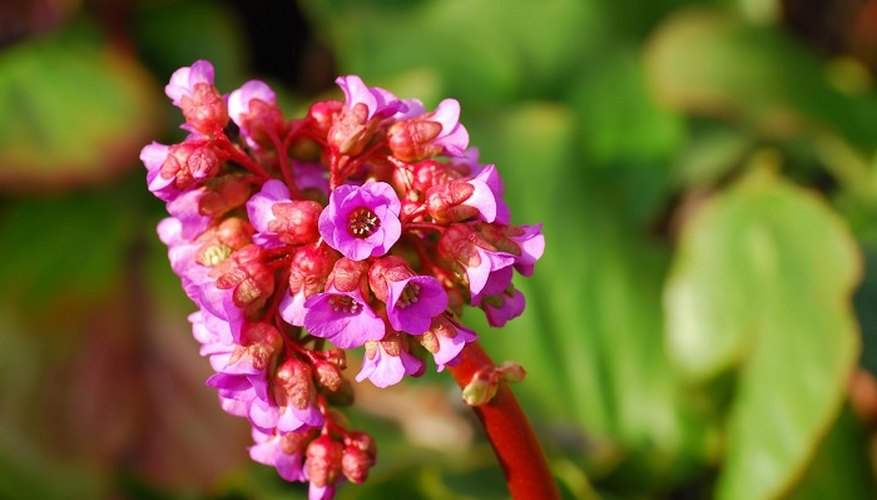Perennial bergenia produces lavender, white, pink or red clusters of flowers atop tall stems. The large heart-shaped leaves are evergreen, providing colour in the garden year-round. It flowers in spring and early summer, while the foliage turns red or bronze in autumn and winter. Propagate bergenia from divisions, cuttings or seeds.
Division
Dividing is the preferred method for propagating bergenia. The plant requires division every three to five years, otherwise it becomes overgrown. Bergenia grows from a swollen root structure called a rhizomes. In late spring, after the flowers have died off, dig up the bergenia and cut apart the rhizomes. Leave a crown of stems and foliage attached to each rhizome section. Replant the divisions immediately, just as if you were planting new plants. Each divided rhizome grows into a new bergenia plant that is ready to flower the following spring.
- Dividing is the preferred method for propagating bergenia.
- In late spring, after the flowers have died off, dig up the bergenia and cut apart the rhizomes.
Cuttings
A cutting clones the parent plant, allowing you to grow a new plant with all the same characteristics as the one you took the cutting from. Bergenia grow best from root cuttings. Unlike divisions, take cuttings in late winter or early spring before the plant begins putting on new growth. Plant the cuttings in a pot of moistened soil immediately and keep them indoors in a warm, well-lit area. Within a week or two, the cutting grows new shoots and can be planted in the garden after the last spring frost.
- A cutting clones the parent plant, allowing you to grow a new plant with all the same characteristics as the one you took the cutting from.
- Within a week or two, the cutting grows new shoots and can be planted in the garden after the last spring frost.
Seeds
Bergenia seeds rarely produce plants true to the parent they are harvested from, and they also have a low rate of viability. When choosing seed propagation, purchase the seeds from a reputable seed supplier to ensure the highest quality possible. Sow the seeds as soon as the soil thaws enough to work in early spring, or start the seeds indoors in pots in late winter. Seed-grown bergenia may not flower the first year.
- Bergenia seeds rarely produce plants true to the parent they are harvested from, and they also have a low rate of viability.
